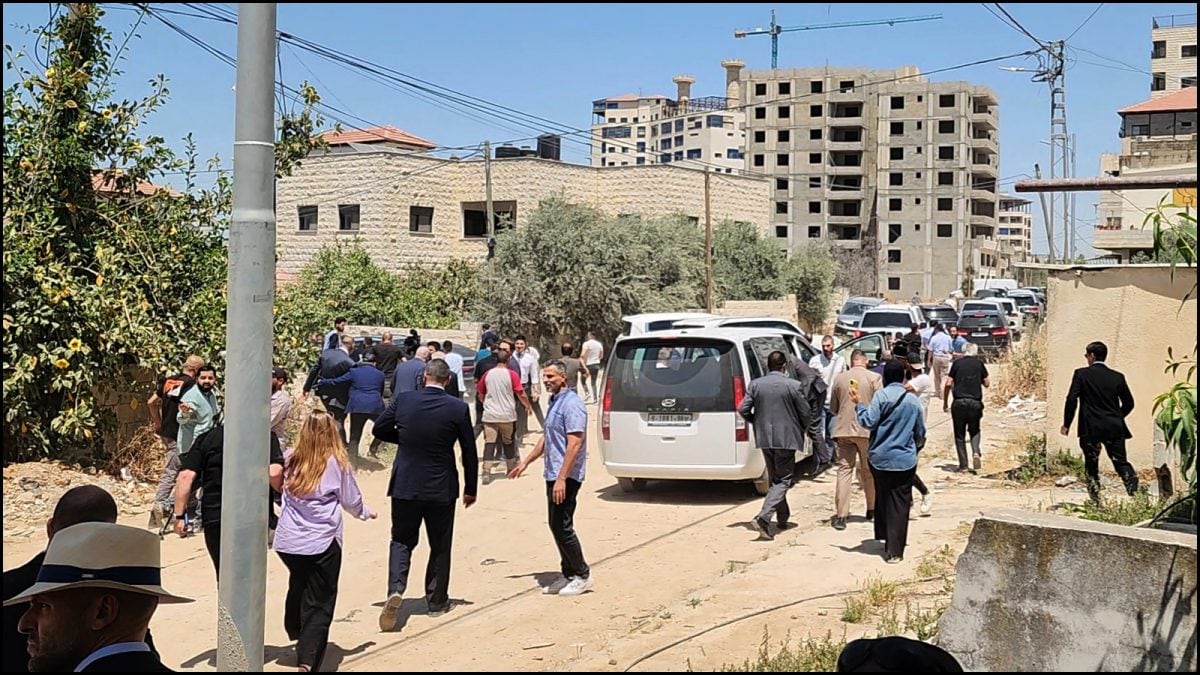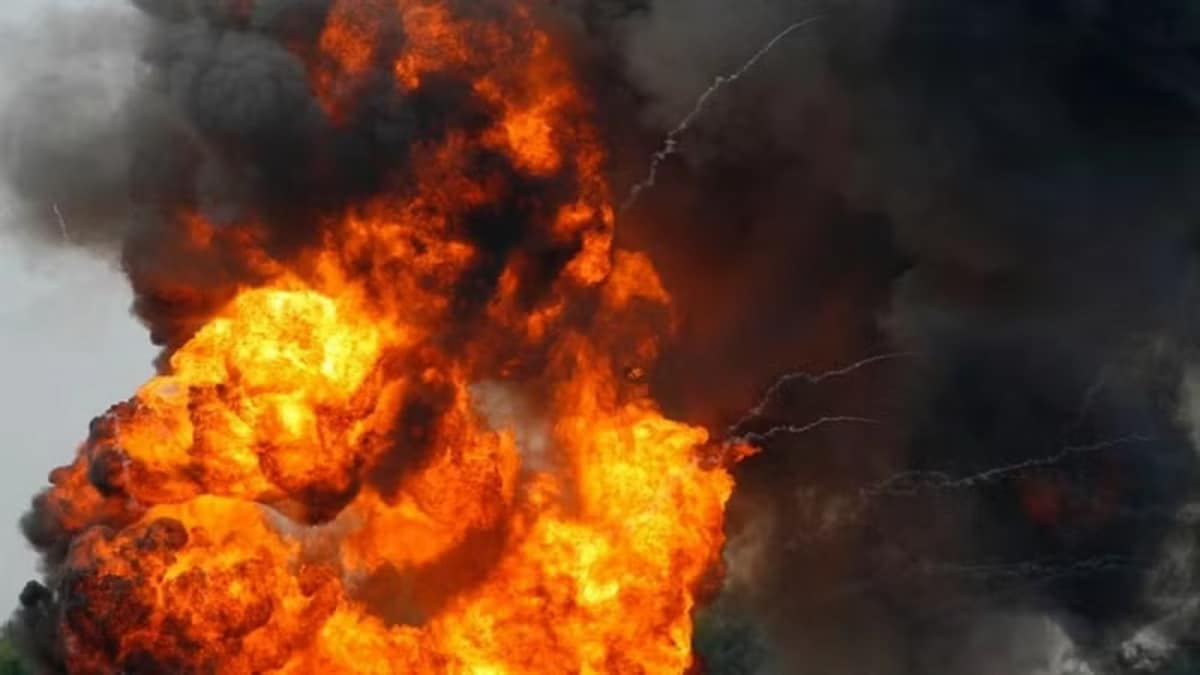Israel lacks the specialist munitions that could completely destroy Iranian nuclear weapons infrastructure.

To strike Iran's underground nuclear facilities, Israel would need a Massive Ordnance Penetrator (MOP) seen here being released by a US Air Force B-52 bomber (US DoD photo via Wikimedia Commons)
New intelligence obtained by the United States suggests that Israel is making preparations to strike at Iran's nuclear facilities. "The chance of an Israeli strike on an Iranian nuclear facility has gone up significantly in recent months," CCN reported, quoting multiple US officials to indicate such preparations were underway.
This comes even as the Trump administration pursues a diplomatic deal with Teheran, getting it to halt its nuclear weapons programme in return for a lifting of sanctions. Iran signed the Nuclear Non-Proliferation Treaty in 1968 and ratified it in 1970. But the current Islamic regime, which took power in 1979, opposes the signing of this treaty as a relic of the previous monarchy. It has not pulled out of the NPT, but since the 2000s, Iran has embarked on a nuclear power generation program which many believe will give it nuclear weapons.
Like India, Pakistan and Israel, whose nuclear weapons programme is a by-product of its civilian nuclear power generation facilities, Iran is believed to be pursuing twin routes to nuclear weapons: extracting plutonium from civilian nuclear plants, and enriching uranium, which it mines in the country.
ISRAEL'S NUCLEAR WORRY
Israel acquired nuclear weapons in the 1960s. Like India and Pakistan, it is not an NPT signatory. Israel has fought and defeated its Arab neighbours in three wars since its independence in 1948. Israel has ensured no Arab country acquires nuclear weapons that could threaten its existence. It launched airstrikes against Iraq in 1981 and Syria in 2007 in order to destroy nuclear reactors it believed could create nuclear weapons.
Since the 1979 revolution, the Iranian regime has directly targeted Israel, with successive leaders threatening to wipe it off the map. Israel has embarked on an extensive covert programme since the 1980s to ensure Iran doesn't get the bomb. It has assassinated Iranian nuclear weapons scientists and sabotaged reactor centrifuges using computer viruses.
Israel is yet to strike directly at Iranian nuclear weapons facilities for various reasons. But recent incidents where Israel has used its superior air force to destroy its adversaries at extended ranges indicate this could be a possibility.
Since October 8, 2023, Israel has battled a range of Iranian proxies -- Hamas in the Gaza Strip, Hezbollah in southern Lebanon and the Houthis in Yemen. Iran had ringed Israel with proxies to ensure it can fight a non-contact battle with Israel. But in 2024, Israel and Iran struck each other's territories using fighter jets, drones and missiles. This suggests an Israeli strike against Iran's nuclear weapons program is plausible.
But there are technical and geographical issues why an Israeli strike on Iran's nuclear infrastructure could be an issue.
1. Iran's nuclear weapons infrastructure is underground
Iran has learnt from Israel's pre-emptive nuclear strikes against Syria and Iraq. Both those strikes were against single reactors: Osirak in Iraq in 1981 and at the Al-Kibar facility in Syria in 2007. Iran's nuclear programme is hence dispersed across its geography. At 1.6 million square kms, Iran is a country half the size of India. Iran's nuclear infrastructure includes uranium mines and facilities such as gas centrifuges, which enrich this uranium and process it.
Two of these nuclear facilities -- the enrichment facilities in Fordow and Natanz -- are buried deep underground, under several metres of rock and reinforced concrete. These facilities can only be targeted by precise bunker-busting munitions.
2. Limits of Israel's airpower
Iran is 1000 kms away from Israel's border. Hypothetically, Israel could launch an extraordinarily complex military operation, primarily involving fighter jets, to knock out the country's nuclear facilities. These fighters would need to be refuelled in the air and fly extreme distances to get to their targets. But here again, there's a problem. Israel's air force lacks either the platforms or specialised munitions to destroy the facilities.
To destroy the underground facilities like Natanz and Fordow, Israel will need something like the GBU-57 Massive Ordnance Penetrator (MOP), which weighs over 12 tonnes, and at 6 metres long, is half the length of a city bus. The MOP can penetrate and explode 61 metres below the soil. But it can only be carried by US heavy bombers like the B-52 and the B-2, which Israel does not have in its inventory. In short, Israel cannot destroy Iran's nuclear weapons sites on its own.
3. Can Israeli innovation strike on its own?
Israeli military innovators are second to none. In 1976, they carried out one of the world's greatest special forces operations. A hundred Israeli commandos flew over 4,000 kms to rescue 102 Israeli hostages in Entebbe, Uganda. The rescue force travelled back safely after killing the terrorists and destroying a fourth of the Ugandan air force on the ground. In 2024, Israeli intelligence killed and maimed over a thousand senior Hezbollah operatives in Lebanon by booby-trapping their radio pagers.
Israel could well create a home-grown MOP to target Iran's buried nuclear facilities. The Israeli MOP could either be launched from the back of a converted military transport aircraft like a C-130 Hercules or by a converted intermediate range ballistic missile. Using either of these platforms would be fraught with extreme risk and technological challenges. But as history shows us, Israel has always risen to these challenges in the past.
Published By:
Dev Goswami
Published On:
May 21, 2025

 8 hours ago
8 hours ago



















